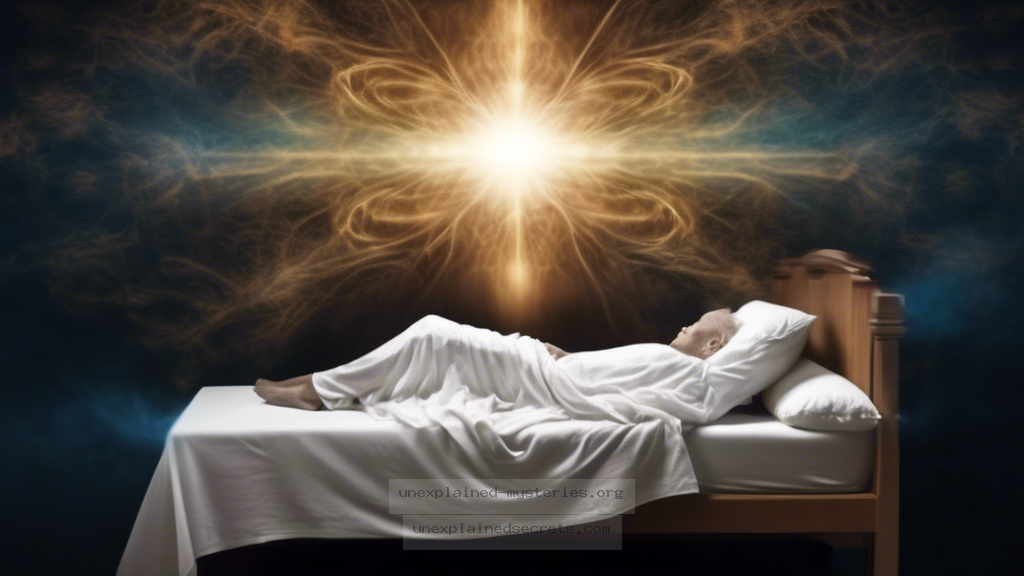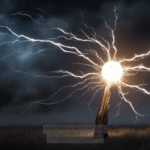What Really Happens to Consciousness After Clinical Death? Unraveling the Near-Death Experience Mystery
What Really Happens to Consciousness After Clinical Death? Unraveling the Near-Death Experience Mystery
The phenomenon of Near-Death Experiences (NDEs) has intrigued humanity for centuries, raising profound questions about the nature of consciousness, existence, and what lies beyond death. Understanding NDEs is crucial not only for those who have experienced them but also for the broader implications they hold for our understanding of life and death. This blog post delves into the compelling mystery of consciousness after clinical death, examining historical accounts, scientific research, and philosophical implications.
Historical Context of Near-Death Experiences
Near-Death Experiences have been documented throughout history across various cultures and religions. Ancient texts, such as the Tibetan Book of the Dead and accounts from early Greek philosophers, describe experiences similar to modern NDEs. These accounts often detail sensations of leaving the body, moving through a tunnel, encountering bright lights, and meeting deceased loved ones. The consistency of these experiences across different eras and cultures suggests that they might represent a universal aspect of human consciousness.
In more contemporary history, the term “Near-Death Experience” was popularized in the 1970s by Dr. Raymond Moody, whose book “Life After Life” documented numerous cases of individuals who had been declared clinically dead and later revived. His work sparked a surge of interest in understanding NDEs from both a psychological and spiritual perspective.
Core Concepts of Near-Death Experiences
NDEs typically involve a series of common elements, including:
- Out-of-body experiences (OBEs)
- Feelings of peace and detachment
- Moving through a tunnel or into a light
- Encounters with spiritual beings or deceased individuals
- A life review or reflection on one’s life
- Reluctance to return to the physical body
One of the most intriguing aspects of NDEs is the consistent reporting of these elements by individuals from diverse backgrounds. This consistency raises questions about the nature of consciousness and whether it can exist independently from the physical body.
Scientific Research and Evidence
Recent scientific studies have sought to investigate the NDE phenomenon more rigorously. A landmark study published in the journal Resuscitation in 2014 involved patients who had suffered cardiac arrest. Researchers found that some patients reported NDEs with vivid details, despite being clinically dead for several minutes. These cases included elements such as OBEs and life reviews, which could not be easily explained by brain activity or oxygen deprivation.
Furthermore, researchers like Dr. Sam Parnia have conducted studies on consciousness during cardiac arrest, revealing that many patients retain awareness even when they are not responsive. This challenges the traditional understanding of consciousness as merely a byproduct of brain activity.
Practical Implications of Understanding NDEs
The implications of comprehending NDEs extend beyond mere curiosity; they can affect how we approach end-of-life care and the grieving process. Understanding that individuals may have profound experiences during critical moments can lead to more compassionate treatment and support for those facing terminal conditions.
In addition, NDEs can provide comfort to families dealing with loss. Knowing that their loved ones may have encountered something beautiful or transformative can alleviate some of the fear associated with death.
Key Insight: Understanding NDEs can lead to improved end-of-life care and support systems for patients and families. 💡
Alternative Perspectives on Near-Death Experiences
While many view NDEs as evidence of an afterlife or the continuation of consciousness, skeptics offer alternative explanations. Some argue that NDEs are merely hallucinations or brain responses to trauma, oxygen deprivation, or chemical changes during near-death states. Neurobiological explanations suggest that the brain releases endorphins and other chemicals during extreme stress, potentially creating sensations of peace or detachment.
Philosophers and scientists continue to debate the nature of consciousness itself. Some posit that consciousness is a fundamental aspect of the universe, while others argue it is an emergent property of complex brain processes. This ongoing discourse emphasizes the need for further exploration and understanding.
Common Misconceptions About NDEs
There are several misconceptions surrounding NDEs that warrant clarification:
- Misconception 1: NDEs are purely religious experiences. While many individuals interpret their experiences through religious lenses, NDEs occur across a wide spectra of beliefs, including atheism and agnosticism.
- Misconception 2: NDEs are always positive. While many report uplifting experiences, some individuals describe distressing or negative sensations during their NDEs.
- Misconception 3: NDEs prove the existence of an afterlife. NDEs provide subjective experiences that raise questions about consciousness, but they do not definitively prove an afterlife.
Notable Fact: NDEs can vary significantly in emotional tone, with some individuals reporting both positive and negative experiences. ⚠️
Best Practices for Investigating Near-Death Experiences
For those interested in studying NDEs, consider the following best practices:
- Conduct qualitative research: Collect personal accounts through interviews and surveys to understand the diversity of experiences.
- Collaborate across disciplines: Engage with neuroscientists, psychologists, and spiritual leaders to foster a multi-faceted understanding.
- Respect personal narratives: Approach each account with sensitivity, recognizing that these experiences are deeply personal.
- Utilize emerging technologies: Explore neuroimaging and other advanced techniques to study brain activity during NDEs.
Future Developments and Ongoing Research
The field of NDE research is evolving, with ongoing studies examining the physiological and psychological aspects of near-death experiences. As technology advances, researchers are exploring the brain’s role in consciousness during critical conditions, potentially offering new insights into the nature of existence.
Organizations like the International Association for Near-Death Studies (IANDS) continue to promote research and education about NDEs, fostering a community of interest for both professionals and those personally affected by these phenomena. Emerging research is also focusing on the long-term effects of NDEs on individuals’ lives, particularly in terms of their spiritual beliefs and attitudes toward death.
Conclusion: The Enigmatic Nature of Consciousness
The mystery of what happens to consciousness after clinical death remains one of the most profound questions of our time. Near-Death Experiences provide tantalizing glimpses into the possibility that consciousness may exist independently of the physical body. While scientific advancements continue to shed light on this phenomenon, philosophical and spiritual implications remain complex and deeply personal.
As we navigate this intriguing territory, it is vital to approach NDEs with an open mind, recognizing the diversity of experiences and interpretations. Whether viewed through a scientific lens or a spiritual one, the study of Near-Death Experiences invites us to explore the very essence of what it means to be human. 💫
Other Articles
Recent Posts
- What Happened to Flight MH370? The Conspiracy Theories That Still Haunt Us
- What Secrets Lurk Within the Walls of the Infamous Trans-Allegheny Lunatic Asylum?
- What Evidence Supports the Existence of Bigfoot in the Pacific Northwest?
- What Happened to the Indus Valley Civilization? Unraveling the Mysteries of Ancient Urban Life
- Can Telepathy Be Scientifically Proven Through Laboratory Evidence?







